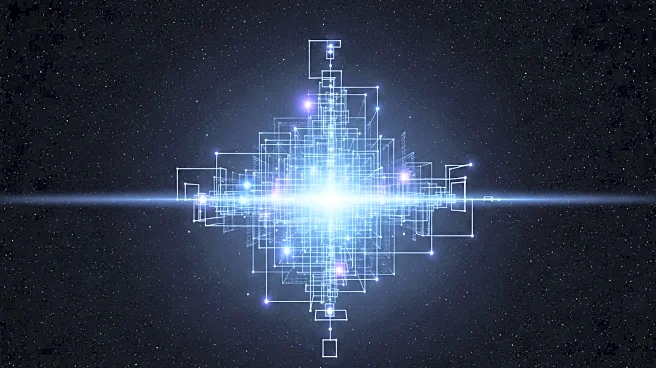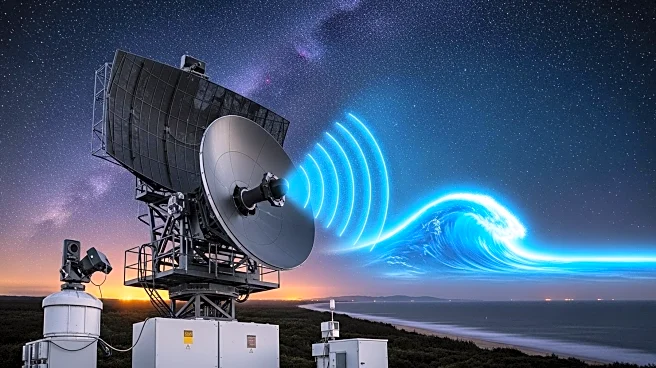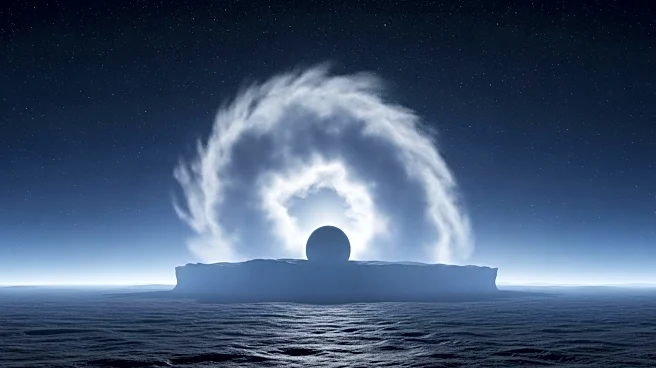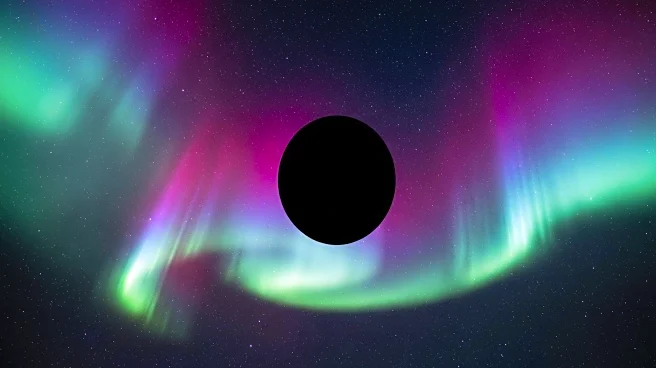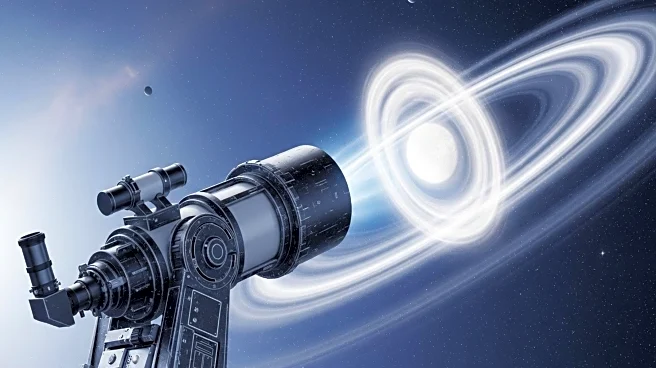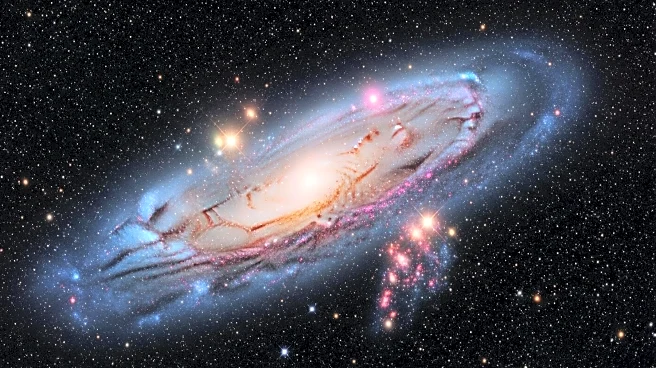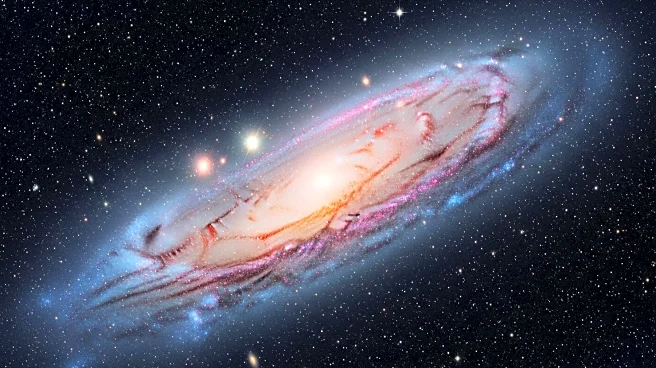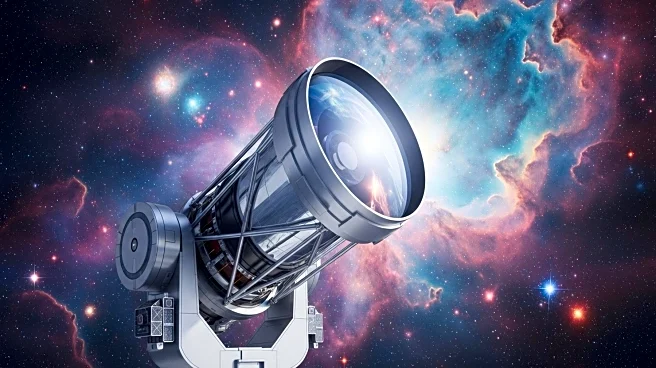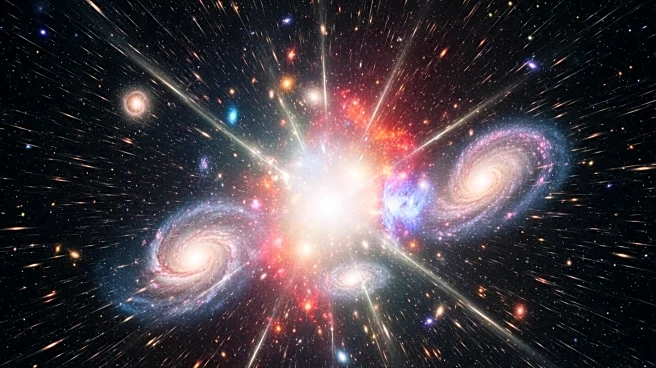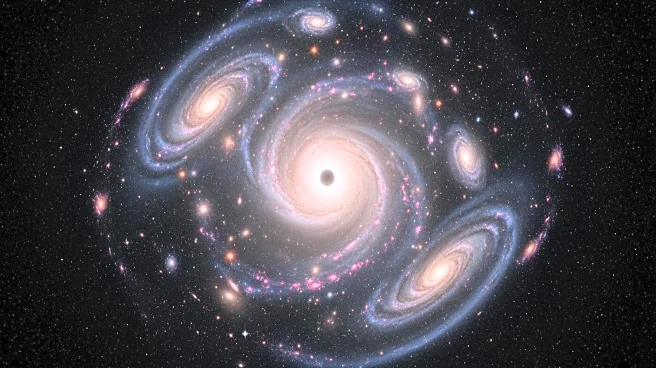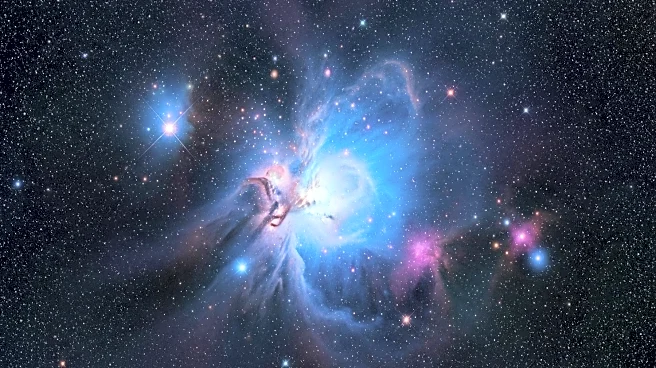What is the story about?
What's Happening?
The Vera C. Rubin Observatory is set to utilize a new algorithm, ImageMM, developed by Johns Hopkins mathematician Yashil Sukurdeep, to enhance the quality of images captured by ground-based telescopes. This algorithm aims to remove atmospheric blurring effects, which have historically disadvantaged ground-based observatories compared to space-based ones like the Hubble and James Webb Space Telescopes. ImageMM has already been successfully tested on the Subaru Telescope in Hawaii, producing sharper images than previously possible. The algorithm works by modeling how light travels through the atmosphere and applying this model to telescope images, effectively reconstructing clearer images from distorted observations.
Why It's Important?
The implementation of ImageMM at the Rubin Observatory is significant for astronomical research, particularly in mapping the distribution of dark matter in the universe. By improving image clarity, the algorithm will enhance the accuracy of measurements related to weak gravitational lensing, a key method for studying dark matter. This advancement could lead to more precise scientific observations and discoveries, benefiting the broader field of astrophysics. Additionally, while space telescopes offer superior image quality, their narrow fields of view limit their observational scope. Rubin's wider field of view, combined with ImageMM's enhancements, will provide a substantial advantage in capturing detailed cosmic phenomena.
What's Next?
The Rubin Observatory plans to begin science operations later this year, applying the ImageMM algorithm to its observations. This development is expected to improve the quality of data collected, aiding in the observatory's mission to map dark matter and study cosmic structures. As the algorithm is further integrated, it may prompt other ground-based observatories to adopt similar technologies, potentially revolutionizing the field of ground-based astronomy. Continued collaboration between institutions like Johns Hopkins and observatories worldwide could lead to further innovations in image processing techniques.
Beyond the Headlines
The use of ImageMM highlights the ongoing efforts to bridge the gap between ground-based and space-based astronomical observations. This technological advancement underscores the importance of interdisciplinary collaboration in scientific research, combining mathematics and astronomy to overcome longstanding challenges. The success of such algorithms may inspire further exploration into adaptive optics and other methods to enhance observational capabilities, ultimately contributing to a deeper understanding of the universe.
AI Generated Content
Do you find this article useful?
